Taking off on a safari in Africa is your window into the untamed wildlife personalities. Here, nature’s dramas unfold against backdrops of landscapes ranging from dense jungles to arid deserts. This incredibly diverse continent holds some globally acclaimed wildlife reserves. Nonetheless, your safari destination can be influenced by local ecosystems, wildlife populations, and conservation efforts.
Did you know Namibia is home to the world’s tallest elephants? They’re found in the deserts of the Skeleton Coast! Also, did you know Zambia’s walking safari in South Luangwa National Park offers ground-level views of nature’s offerings that few players can match? Probably not.
Remember, choosing the best place for a safari in Africa accounts for your wildlife-viewing desires. Whether tracking the Great Migration across the Serengeti plains, canoeing past hippos in the Okavango Delta, or watching endangered mountain gorillas in the misty forests of Uganda and Rwanda—your choices are abundant.
Now let’s look at the best places for safaris in Africa. You’ll be amazed by African safaris’ diversity in store for wildlife enthusiasts.
11 Best Places for Safaris in Africa
Choosing the best place for a safari in East Africa, South Africa, or other parts of Africa will ensure your wildlife experience is a profound engagement with the natural world.
Let’s look at the 11 best places to go in Africa for a safari:
1. Botswana
Botswana’s commitment to conservation and high-quality, low-impact tourism promises visitors an authentic and intimate encounter with nature. Visit the Okavango Delta, a unique inland delta where the river meets a tectonic trough in the middle of the Kalahari Desert. This results in a biodiversity wetland attracting wildlife varieties like elephants, lions, leopards, and rhinos—especially during the May to September flood season.
Note that the Chobe National Park has among the highest concentrations of elephants in Africa. The park’s riverfront is a spectacle during the dry months, where large herds of elephants are seen along with predators.
Another less-known gem is the Makgadikgadi Pans, one of the largest salt flats in the world. Adventurers like you can experience one-of-its-kind interactions with habituated meerkats.
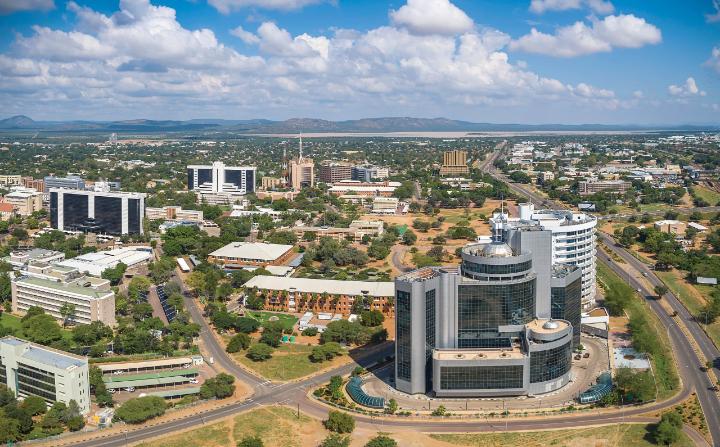
2. Masai Mara National Reserve in Kenya
This wildlife reserve houses the splendor of the annual Great Migration. Over two million wildebeests, zebras, and gazelles make a circular tour between the Mara and the Serengeti in Tanzania, braving crocodile-infested waters and predators in one of the world’s most breathtaking natural events.
Its conservation model is an interesting feature. The reserve is bordered by several private conservancies in partnership with local communities.
Consider the Mara Naboisho Conservancy for more exclusive and sparsely crowded safari experiences. These conservancies are instrumental in animal conservation through their buffer zones and additional habitats for the reserve’s wildlife.
Don’t forget to visit Masai villages and partake in traditional dances, music, and eye-opening cultural activities. Rest assured, the Masai people’s knowledge of local flora and fauna makes each guided walk a learning experience about the ecological and cultural heritage of the area.
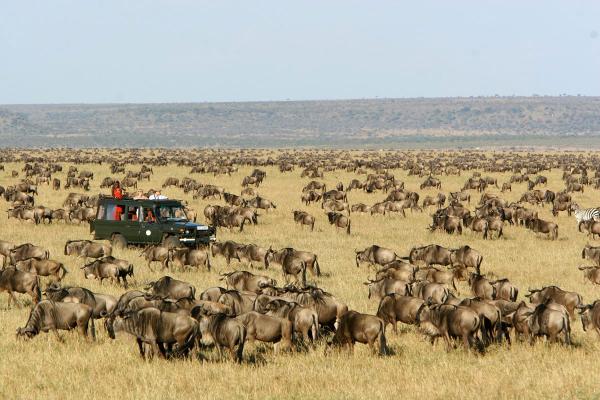
3. Ngorongoro Crater in Tanzania
Tanzania’s UNESCO World Heritage site is the biggest intact volcanic caldera globally. What’s best is that it serves as a natural enclosure for some of Africa’s densest populations of large mammals.
Visit the natural amphitheater, a haven for 25,000+ animals, including the rare black rhino and the densest populations of lions worldwide. The crater’s unique geography allows you to observe an incredible range of wildlife in a relatively small area. Such features make it among the most rewarding safari destinations in the African continent.
Enter the crater with the best tour operators in Tanzania and question them about its rich archaeological significance. The discovery of early human fossils at Olduvai Gorge lies in the same conservation area. These discoveries, including the famous Zinjanthropus boisei skull, provide key human evolutionary evidence. You can discover the hows and whys of this Tanzania crater safari earning the region’s nickname, “The Cradle of Mankind”.
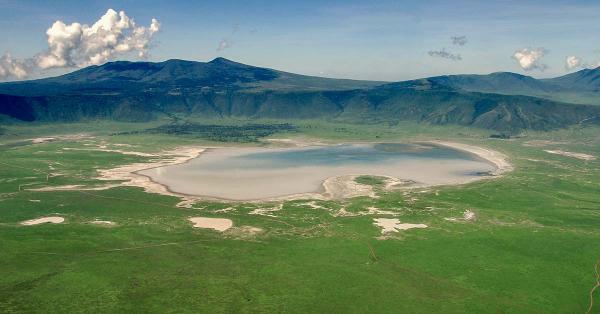
4. Serengeti National Park
Besides the annual Great Migration and sightings of highly dynamic wildlife environments, this park’s plains have been at the center of ground-breaking animal behavior, notably by George Schaller and Bernhard Grzimek. The number of wildlife and boutique activities available in the heart of Serengeti is truly exciting.
Additionally, the Serengeti is notable for its age. The area has been the site of continuous animal migration for over a million years, making it a vital location of the world’s natural heritage. From grasslands and swamps to riverine forests and kopjes, these ecosystems create rich habitats for 500 bird species and 70 large mammal species.
Visiting the Serengeti offers tempting opportunities like night drives and walking safaris in controlled areas. These activities are typically restricted in many other parks. Thus, you will not find a better chance to spot nocturnal animals on your Serengeti safari.
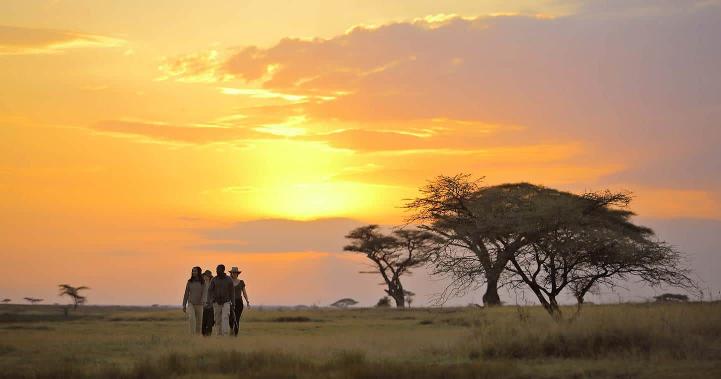
5. Queen Elizabeth National Park in Uganda
This national park in Uganda is distinguished by its ecological diversity and two dramatic water bodies, Lake Edward and Lake George, which the Kazinga Channel connects. Opt for the boat safaris and spot dozens of hippos and crocodiles close-up, as well as a variety of birds along the water’s edge.
Keep scanning to spot tree-climbing lions of the Ishasha sector, a rare behavior not commonly seen in these animals. They climb into the branches primarily during the warm midday hours, offering intriguing viewings for wildlife enthusiasts.
It’ll be a matter of time till you come across the park’s impressive features, including volcanic cones and deep craters. Some of these craters are also filled with water, forming beautiful lakes.
Tip: Go chimp tracking in the Kyambura Gorge and also carry binoculars to spot birds in Africa’s best birding destination.
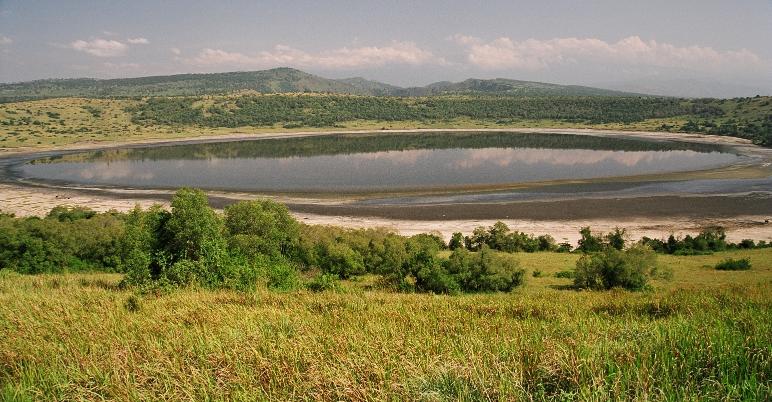
6. Akagera National Park in Rwanda
This park is Rwanda’s hidden safari gem, often overshadowed by the famous mountain gorillas of Volcanoes National Park.
You must know about this park’s remarkable conservation success story. It rebounded from near devastation during Rwanda’s turbulent past and now offers safari experiences across savannahs, woodlands, wetlands, and a dozen lakes.
Named after the Akagera River, this park feeds extensive wetlands—home to one of Africa’s highest hippo densities and large numbers of Nile crocodiles. The eastern boundary is marked by a series of lakes, each with its distinct character.
Hats off to their community integration efforts. The park management actively involves local communities in its operations, reducing poaching significantly.
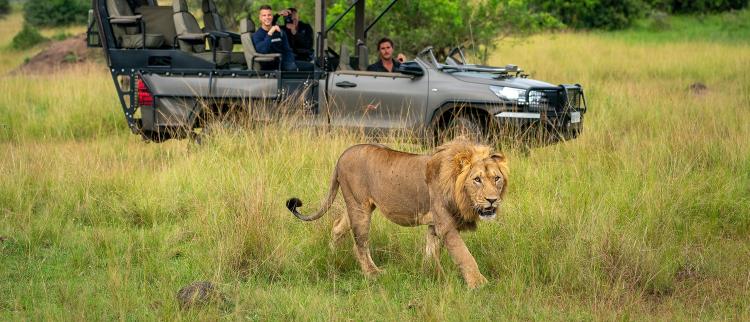
7. Laikipia in Kenya
Unlike traditional national parks, Kenya’s Laikipia County is a patchwork of private and community-owned conservancies. This model permits flexible management practices that benefit both wildlife and local communities. Even better, this standout region hosts the second-largest elephant population in Kenya and is among the last strongholds for endangered species like Grevy’s zebras and reticulated giraffes.
You’ll find diverse wildlife habitats in its arid semi-desert, grasslands, and lush forest terrains. Stay vigilant as it fosters Kenya’s top three highest predator densities—wild dogs, cheetahs, leopards, or the mighty lions.
Interestingly, Laikipia’s innovative approach to human-wildlife coexistence is excellent. Many conservancies have successful livestock integration programs and sustainable agriculture practices to minimize conflict and benefit local communities.
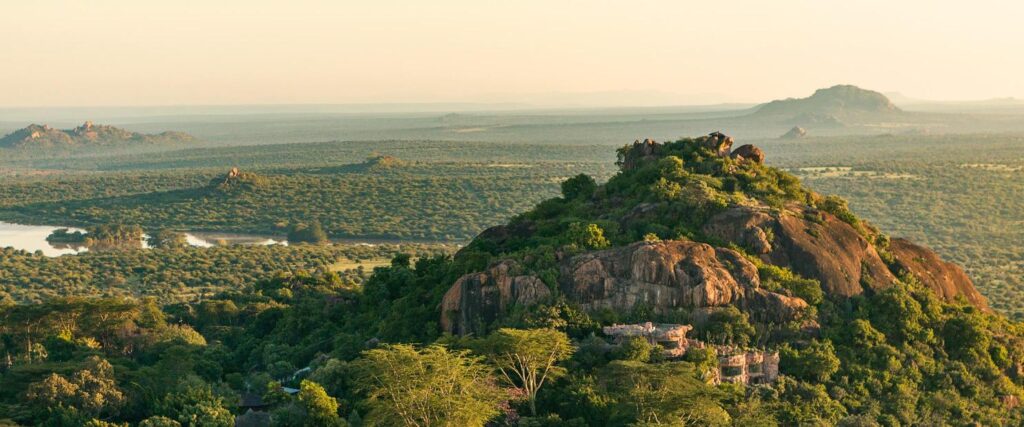
8. Kruger National Park
Another top location for the best safaris in Africa, Kruger National Park offers high chances of seeing the Big Five in their natural habitat. Kruger is also a pioneer in advanced environmental management systems and policies, including everything from biodiversity management to historical conservation.
The park houses numerous archaeological sites, including ancient rock paintings and majestic archaeological ruins at Thulamela and Masorini.
These sites offer a fascinating insider’s perspective into the region’s human history, adding a profound cultural POV to your wildlife experience.
Moreover, the park’s infrastructure is unmatched, with numerous rest camps, luxury and boutique lodges, and designated wilderness trails catering to wildlife viewing preferences and budgets.
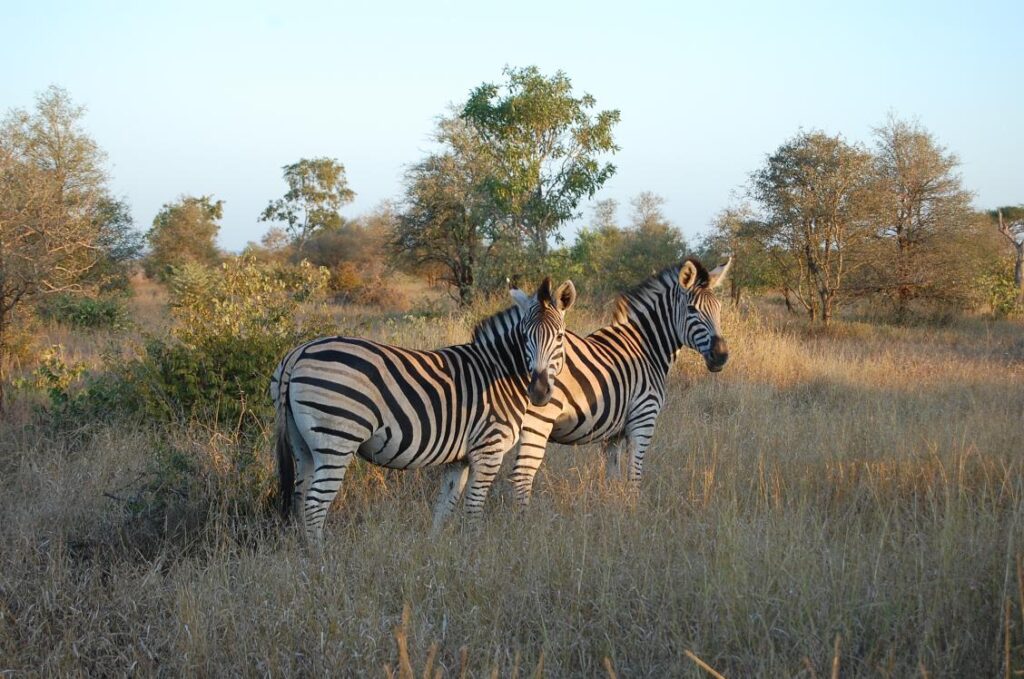
9. Sabi Sands Private Game Reserve
Adjacent to Kruger National Park is the Sabi Sands Private Game Reserve, which is renowned for its extraordinary leopard sightings. The reserve’s open borders allow animals to move freely between the parks, ensuring a rich diversity of wildlife and consistent animal sightings.
The absence of boundary fences facilitates the natural migration patterns of the animals, particularly the larger herbivores and their predators.
Note that Sabi Sands is distinguished by its exclusive luxury lodges and exceptional service. Each lodge offers guided game drives with experienced rangers and trackers. These experts guarantee insightful and educational commentary on the wildlife and ecosystem. Don’t be surprised by added comfort through private plunge pools, personal butlers, and spa treatments—all in the heart of the African bush.
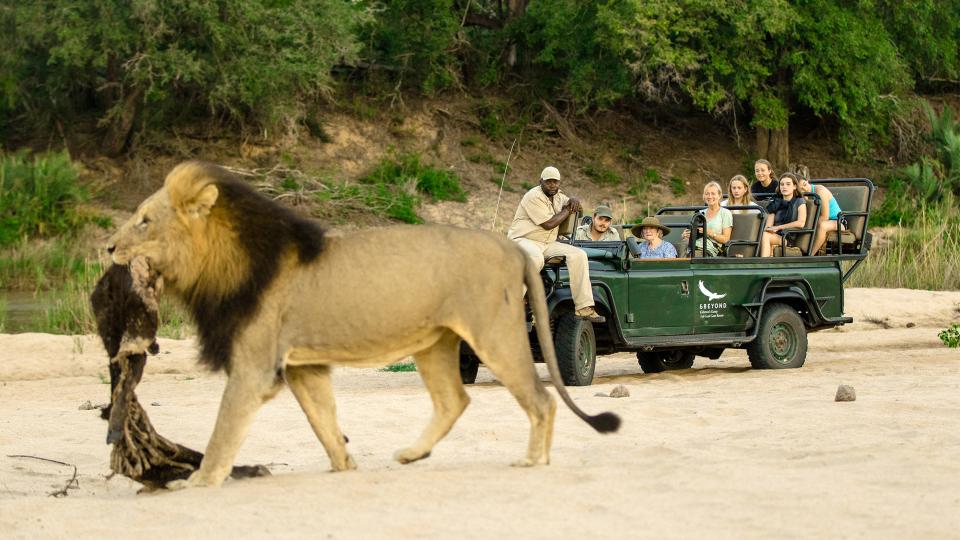
10. South Luangwa National Park
Covering 9050 sq. km, this unfenced and unspoiled national park is home to the safeguarded populations of Cookson’s wildebeest, Thornicroft’s giraffe, and Crawshay’s zebra.
Pioneered by Norman Carr in the 1950s, the walking safari offers a close-up experience unparalleled to that of other parks.
Also nicknamed the Valley of Leopards, you can spot graceful animal movements embracing the shade or stealthily reading for their next kill. Do make a trip to Luangwa River’s steep banks. This is the breeding ground for bee-eaters in their White-fronted and Carmine personalities.
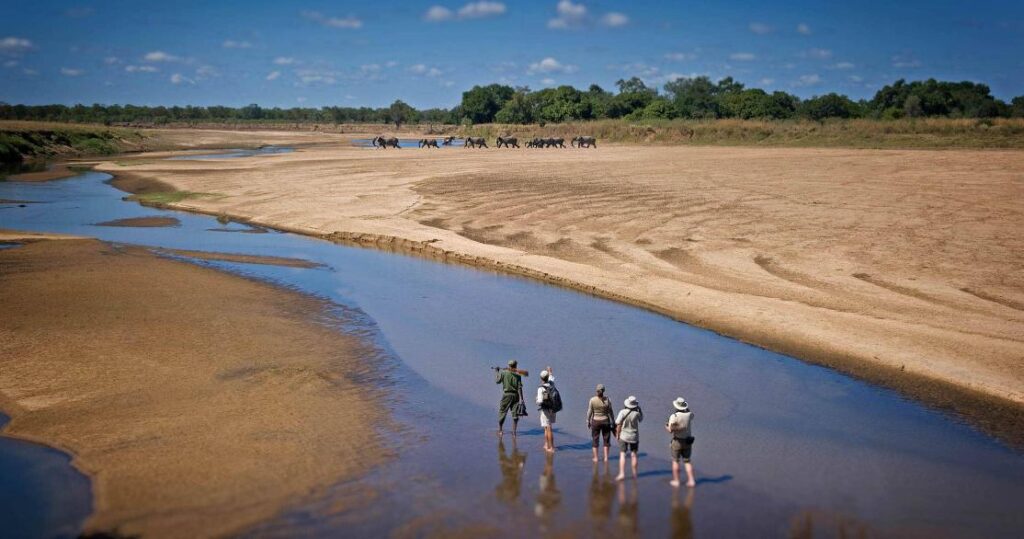
11. Chobe National Park
Here, you’ll find Cape Bufallos and the single largest concentration of elephants globally. Their migratory nature leads them to sway among the Linyanti and Chobe rivers. Visit this park during the dry season to spot the undisputed regal lions and elephants. If zebras are your calling, the rainy season is perfect. And you’re in luck if it’s the hippos since they’re active all year round.
- Red Lechwe’s are around the Chobe floodplains throughout the year
- Herds of 1000 buffalos are visible in the dry season (more inland during the rains)
- Cackling hyenas are typically caught in nocturnal settings around the Linyanti river
- African fish eagles, African skimmers, and the saddle-billed stork are visible from November to April
Lastly, stroll around the Savute channel, stretching approximately 100 km. Its landscapes and wildlife offerings blend fluently for another experience altogether.
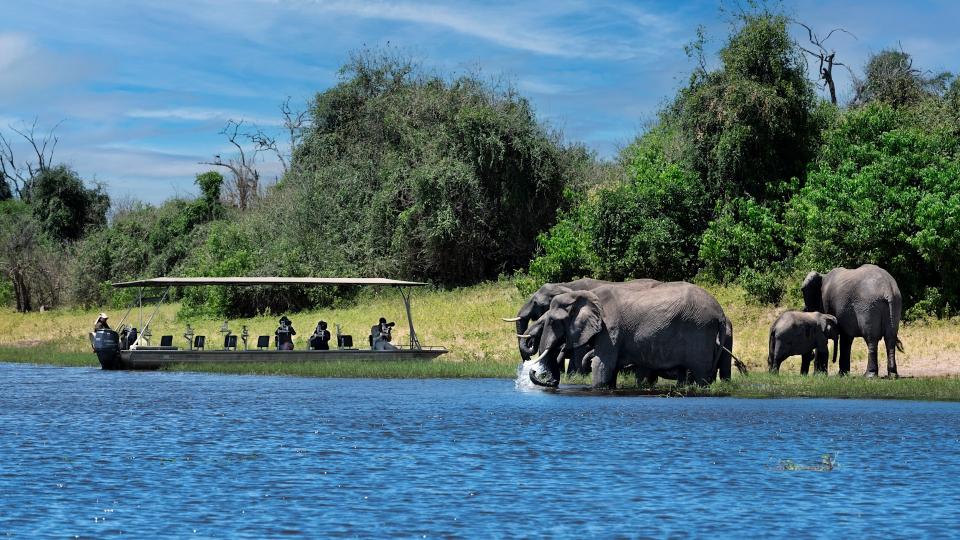
Key Takeaways
All in all, the variety of wildlife guaranteed in the African subcontinent makes it hard to determine the best place for safaris in Africa. Ideally, you should follow our suggestions and create a mixed itinerary of wildlife reserves to spot the bustling biodiversity here.
Whether Tanzania, Botswana, Namibia, or Zambia, our experts have decades of seasoned experience to present the best wildlife viewing experiences in Africa. While our primary priority is curated experiences, we equally prioritize eco-friendly and environmentally-conscious safaris.
Book your first wildlife tour with us and experience the true meaning of a personalized safari.
Give our travel blog section a read to discover the marvels Tanzania offers.


